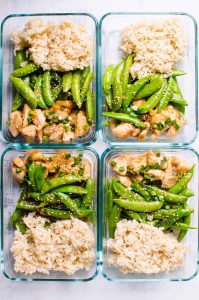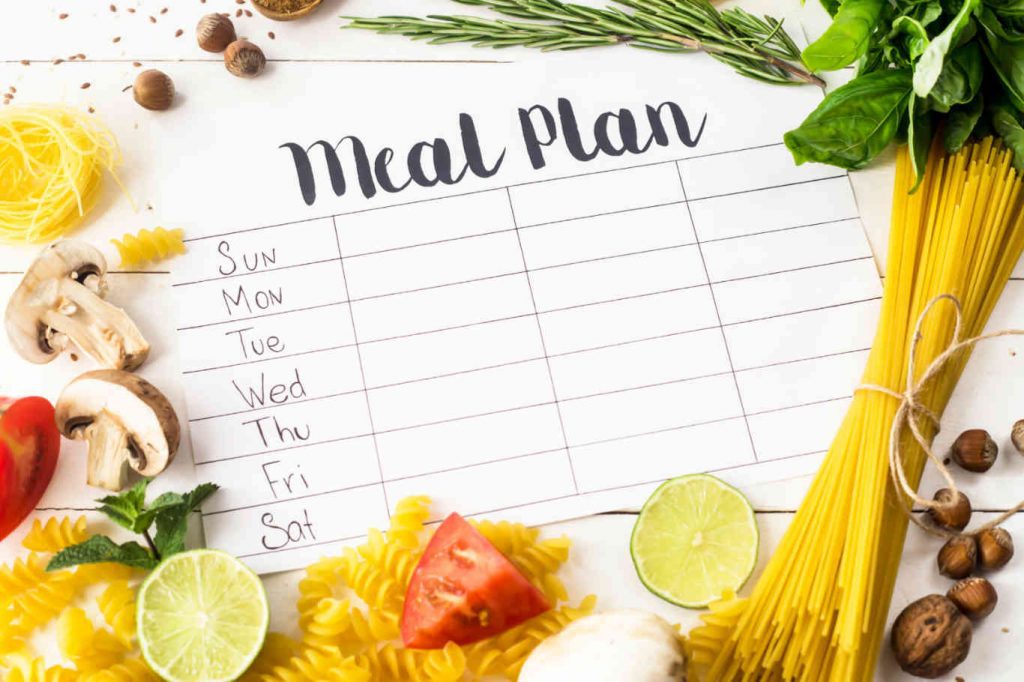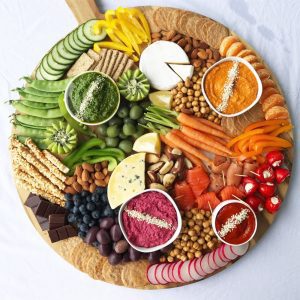Meal Planning + Budgeting + Snacks
Today’s Teaching Video from Coach Kelsey:
https://youtu.be/c6Eu6Gv_75w
Homework:
Finish your meal planning from today.
Peruse the healthy snacks in your E-Cook book and this piece. If you’re a snacker, work to change out the bad for good.
Teaching:
Plan
Prep
Perform
Meal Planning:

Meal planning: The asking “what’s for dinner” question once for the whole week, instead of every night, and then shopping for and prepping the ingredients before cooking. We believe the simplest way to approach meal planning is with three steps.
- Select your dinners and their recipes, if needed.
- Shop for ingredients.
- Prepare those ingredients.
Set a calendar time each week for a 30 minute planning session.
Or
Spend a weekend planning a 1 month chart that can be repeated and you rarely ever have to do the work again.
Use your MissionFiT planning sheet!

- Ask the Eaters
- Take Inventory (use your MissionFiT inventory sheet)
- Plan your meat (Protein) first, side (Carb) second, and Fat last.
- Make Your Emergency Meals List/Have some back up frozen meals
- Pinterest is a great place to find new recipes and be inspired through fantastic photos. Also, reminder you can google any food/meal + “paleo” and someone’s already done it and the recipe will be right there for you.
- If you’re interested in trying a new recipe, limit to one per week in case it’s a flop and you need a plan B.
- Consider a weekly routine of meal plan theme nights:
Sundays – Grilled Night
Mondays – Breakfast for dinner
Tuesdays – Taco Tuesday
Wednesdays – Slow Cooker
Thursdays – Stir-fry
Fridays – Pizza
Saturdays – Sea Food Saturday

12 Tips for Shopping on a Budget:
- SHOP UGLY: very effective at local farmer’s markets, you can opt to buy any ugly produce that may be otherwise discarded, more than likely they will give you a discount.
- PRIORITIZE YOUR SPENDING: When your grocery budget is fixed, you need to prioritize. You might not be able to buy everything you want this week. Keep a running list of “must haves” and “would likes”. The “must haves” will be your priorities. Buy the “would likes” only as you have funds available.You’d be surprised what you can do without. Once I started making recipes without every ingredient called for, I realized that we didn’t really miss those black olives or chopped green chiles. Buy the things that pack the biggest punch to your meal planning.
- BUY IN BULK: If there is something you always crave or you know you’ll consume daily, always buy in bulk, even if shopping at a regular grocery store like shop rite or whole foods. Often times, asking for product in bulk/by the case will give you a discount. You can also utilize online stores like Thrive for bulk items. Online companies like this also tend to give you ‘reward’ products once you spend a certain amount of money.
- SHOP LOCAL: Farmers markets or even road-side farm stands will always give you good deals, especially if you go towards the end/closing time. They want to get rid of product so will cut deals with anyone to get a product out so that it doesn’t go to waste.
- JOIN A CSA! What better local support than joining Community-Supported Agriculture. How you win by joining a CSA is in the payment breakdown. Pay X amount of dollars upfront and get an abundance of fresh fruits and veggies throughout the year that you already pre-paid for, you will always get more than what you paid for and then some.
- FROZEN: When it comes to cost and shelf life, you can absolutely WIN with some frozen and canned items, especially during 2-for deals. Also, with canned/frozen foods; it is super convenient to stock your home, so whenever you are in a bind or need a quick meal, you always have a backup plan, rather than resorting to take-out or fast food. As a bonus with ingredients like canned beans or frozen veggies, most of the labor is already done for you.
- MEMBERSHIP: Ask about store memberships or programs, some stores have memberships or programs (think as big as Costco, or as local as Green-Life Market) where if you join and become a member, you automatically get discounts, perks & special offers like a paycheck, cut from your annual purchase total (Costco).
- INSURANCE: Believe it or not, some of the healthier and more proactive insurance companies now give you rewards, perks, bonuses for taking care of yourself and living a healthy lifestyle through diet & activity! Save where you can.
- SHOP THE PERIMETER: This one goes all the way back to Nutrition 101 from undergrad. Shopping the perimeter of the store and giving yourself only the options of fresh produce, meats/cheeses, nuts/seeds, and cold-case items you need. Avoiding processed foods tends to be cheaper and healthier.
- COOK AT HOME: Throw on your chef’s hat and cook at home! The more you cook at home, the more you’ll save. Look at it this way, a salad that might cost you $5 to make at home could cost you $15 to eat out at a restaurant. It really is a multi-benefit weapon, in that, the more home-cooked meals you make, the more money you save.
- BATCH COOK: When it comes to becoming a legendary home chef, learn to batch-prep your ingredients. If batch-cooking entire meals isn’t your thing, batch-prepping ingredients can still save time and money. If you dice veggies for a dish, dice extra and freeze them in single-serving freezer bags for next time. You can take the idea as far as freezing homemade soups or broths in quart containers or in your ice cube tray, so that next time you need a broth-base for your quinoa, rice, or stir-fry, you are ahead of the game.
- LEFTOVERS: Hey Chef! Last but not least, learn to love leftovers. Leftovers really are a victory and a next-day gift. The gift… the ability to grab something nourishing and delicious right out of the fridge the following day. Are you one of those people who hate having the same meal back to back? No big deal at all. Recreate and work your imagination! Leftover cooked protein, grains and vegetables can be repurposed to quickly throw together totally different meals. For example, the leftover entrée of grilled chicken or fish from the night prior could make for some mean tacos, can easily top a CSA salad, or it can complement a grain bowl or a stir-fry.
3 Tips for Shopping:
- Never go hungry to the grocery store.
- Only buy what’s on the list.
- Perhaps purchase online so you avoid being tempted down certain aisles.
Before you apply these to your next grocery trip, keep one more powerful point in mind. Currently, the average American does not eat 20% of the food he or she purchases. In dollar value, every household throws away an average of $2,200 of food each year.
Therefore, stop buying so much at the grocery store, shop smart, and seek memberships and bonuses!

MEAL PREP – SPENDING AN HOUR ON A SUNDAY WITH THE FAMILY (OR EVEN ALONE) GOES SUCH A LONG WAY IN PROVIDING A PRO-SANITY EATING WEEK!
Snacks:
First remember, snacks are just smaller meals. You still need a protein, a carb, and a fat, just less of them.
Coach Sarah’s favorite snacks:
Sandwich meat roll ups
3-4 pieces of sandwich meat with 1 sliced bell pepper and ½ an avocado
Wrapped it all up and dip in 4 TBSP of Ranch dressing.
3 -5 (depending on size) Beef/Turkey jerky
1 handful of nuts
1 handful of dried fruit
2/3 cup full fat plain Greek yogurt (*caution with dairy)
½ cup of berries and/or 3 TB of sugar free peanut butter powder
Smaller portion of leftovers from lunch or last nights dinner (chicken salad, meat + veggies, etc)
Smoothie
1 Serving of Protein powder
6 Large Frozen Strawberries
2-3TB Almond Butter
HERE’S A WONDERFUL RESOURCE FOR PLANNING QUICK ON THE GO SNACKS:
https://www.stevespaleogoods.com/Protein-Sampler-p/sampler-protein.htm
Furthered Learning Articles On Today’s Topic:
https://paleoleap.com/paleo-meal-plan/






